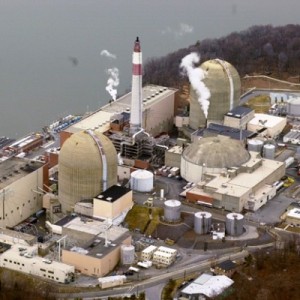Indian Point’s two reactors, operating since 1974 and 1976, generate up to 30 percent of New York City and Westchester’s power. Yet the plant remains controversial.
March 1, 2012, Michael Gerrard, director of the Center for Climate Change Law, moderated the Forum on the Future of Indian Point held at Columbia Law School. The forum asked whether Indian Point was “Safe, Secure and Vital or an Unacceptable Risk?” Renee Cho covered it on the Columbia Earth Institute blog, here.
I was not there. However, have some thoughts …
Indian Point is close to 40 years old, is 30 miles from New York City, was built on two earthquake faults. A 6.0 or 7.0 earthquake under Indian Point would not surprise seismologists. Routine operations kill more than 1.0 billion fish, shrimp, and crabs in the 912.5 billion gallons of water it pulls out of the Hudson each year (2.5 billion gallons per day – almost double the drinking water consumed by New York City’s people). Routine operations also flush tritium into the Hudson, simply because, tritium, a radioactive isotope of hydrogen, is too expensive to capture. Indian Point’s operator, Entergy, was just fined $1.2 million for a fire at Indian Point (Matt Wald, of the NY Times, covered it here on March 27, 2012).
The discussion at Columbia brought together Paul Gallay, president of Riverkeeper, Ashok Gupta, director of energy policy for the Natural Resources Defense Council, Arthur Kremer, a founder and chairman of the New York Affordable Reliable Electricity Alliance, a lobbying group for the nuclear power industry (according to Source Watch, here), and John Kelly, retired director of licensing for Indian Point.
Gallay and Gupta think Indian Point should be retired. Kremer and Kelly think Indian Point should be relicensed. This is not surprising – environmentalists think nuclear power should be phased out; lobbyists and retired nuclear power industry flaks, people who make their living off of nuclear power, think it’s great.
Riverkeeper has pulled together information on the life-cycle analysis of nuclear power generally and Indian Point in particular, here, “Indian Point Fails the “Green Test.”
The questions then, remain:
- How do we power the future?
- What are the environmental impacts of continuing to operate Indian Point and other nuclear power plants?
- Do Entergy and other Nuclear power plant operators operate Indian Point and other plants safely?
- Can they be operated safely?
- If we shut down Indian Point, what are the costs of not operating it safely? That is of safely not-operating the plant, as opposed to operating it in an unsafe manner.
Suppose we replace nuclear power with wind, solar, geothermal, marine hydro, and other renewable technologies. What are the environmental impacts of
- Wind farms composed of 200 to 500 turbines, each rated for 6.0 MW turbines – with 154 meter blades curving a swath thru 71,480 square meters of air?
- Solar energy on a utility scale?
- Marine hydro turbines?
- Geothermal systems?
And really – what choices do we have?
Happy Earth Day. Think for the Future.
- Do We Need Nuclear Power, Part 1, L. Furman, 4/20/12, here.
- Do We Need Nuclear Power, Part 2, L. Furman, 4/20/12, here.
- Do We Need Nuclear Power, Part 3, L. Furman, 4/21/12, here.
